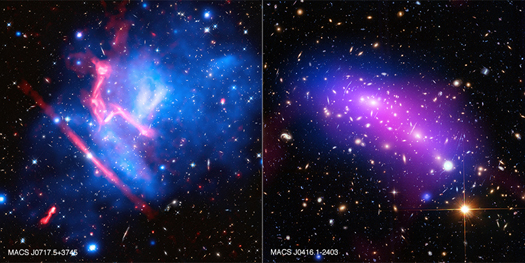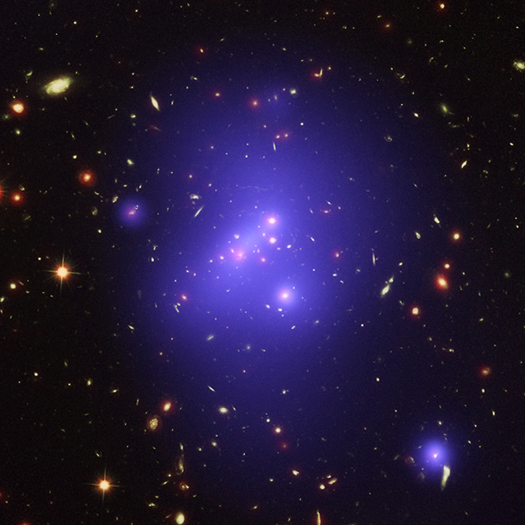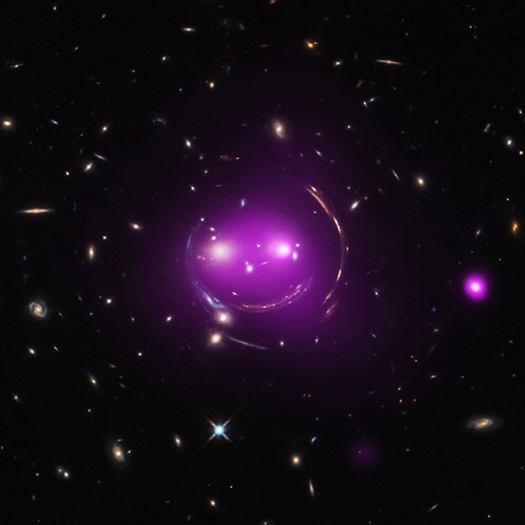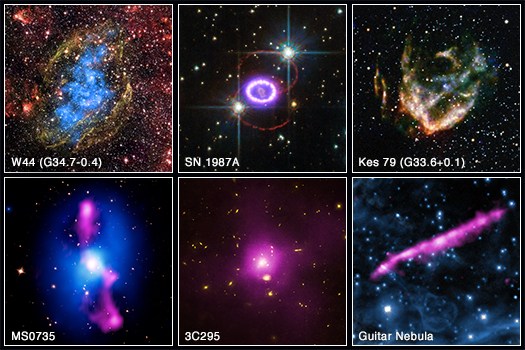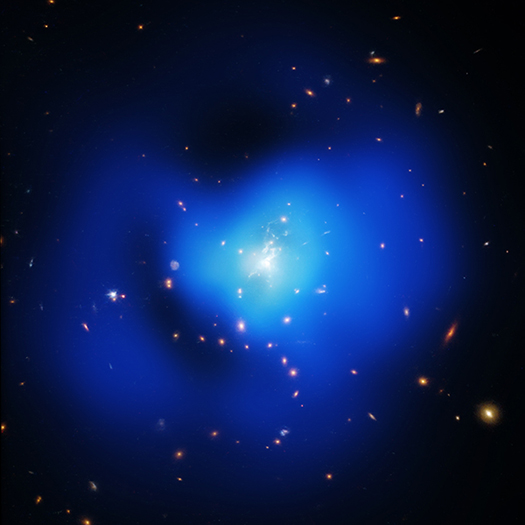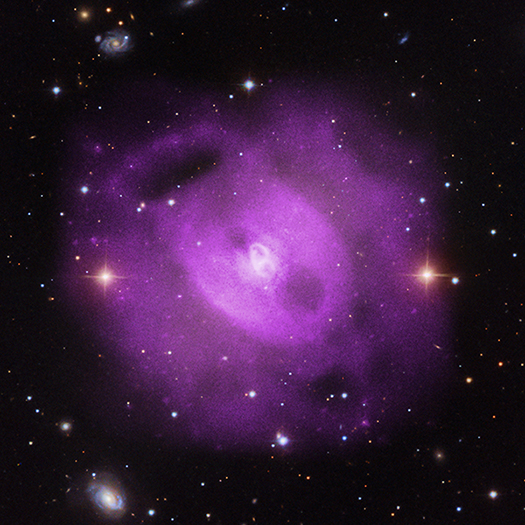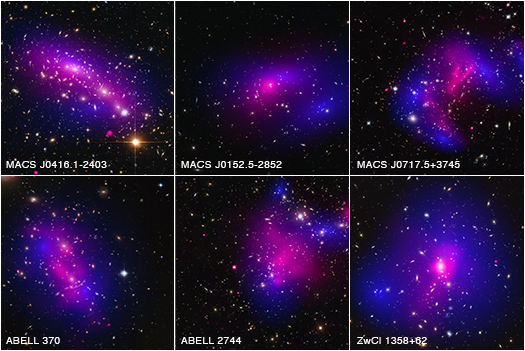Groups & Clusters of Galaxies
Telescopes Combine to Push Frontier on Galaxy Clusters
Galaxy clusters are enormous collections of hundreds or even thousands of galaxies and vast reservoirs of hot gas embedded in massive clouds of dark matter, invisible material that does not emit or absorb light but can be detected through its gravitational effects. These cosmic giants are not merely novelties of size or girth - rather they represent pathways to understanding how our entire universe evolved in the past and where it may be heading in the future.
NASA's Great Observatories Weigh Massive Young Galaxy Cluster
Astronomers have made the most detailed study yet of an extremely massive young galaxy cluster using three of NASA's Great Observatories, as described in our latest press release [link to PR]. This multi-wavelength image shows this galaxy cluster, called IDCS J1426.5+3508 (IDCS J1426 for short), in X-rays from the Chandra X-ray Observatory in blue, visible light from the Hubble Space Telescope in green, and infrared light from the Spitzer Space Telescope in red.
Chandra Finds Remarkable Galactic Ribbon Unfurled
An extraordinary ribbon of hot gas trailing behind a galaxy like a tail has been discovered using data from NASA's Chandra X-ray Observatory, as described in our latest press release. This ribbon, or X-ray tail, is likely due to gas stripped from the galaxy as it moves through a vast cloud of hot intergalactic gas. With a length of at least 250,000 light years, it is likely the largest such tail ever detected. In this new composite image, X-rays from Chandra (blue) have been combined with data in visible light from the Isaac Newton Group of Telescopes (yellow) in the Canary Islands, Spain.
The Extraordinary Success of General Relativity
This month, people around the world are celebrating the hundredth anniversary of Albert Einstein’s Theory of General Relativity (GR). Although this theory can seem esoteric, it has an important practical application: the accuracy of Global Positioning System (GPS) relies on corrections from GR.
Where Alice in Wonderland Meets Albert Einestein
One hundred years ago this month, Albert Einstein published his theory of general relativity, one of the most important scientific achievements in the last century.
A key result of Einstein's theory is that matter warps space-time, and thus a massive object can cause an observable bending of light from a background object. The first success of the theory was the observation, during a solar eclipse, that light from a distant background star was deflected by the predicted amount as it passed near the Sun.
Chandra Data Suggest Giant Collision Triggered "Radio Phoenix"
Astronomers have found evidence for a faded electron cloud "coming back to life," much like the mythical phoenix, after two galaxy clusters collided. This "radio phoenix," so-called because the high-energy electrons radiate primarily at radio frequencies, is found in Abell 1033. The system is located about 1.6 billion light years from Earth.
Chandra Finds Evidence for Serial Black Hole Eruptions
Astronomers have used NASA's Chandra X-ray Observatory to show that multiple eruptions from a supermassive black hole over 50 million years have rearranged the cosmic landscape at the center of a group of galaxies.
Scientists discovered this history of black hole eruptions by studying NGC 5813, a group of galaxies about 105 million light years from Earth. These Chandra observations are the longest ever obtained of a galaxy group, lasting for just over a week. The Chandra data are shown in this new composite image where the X-rays from Chandra (purple) have been combined with visible light data (red, green and blue).
Dark Matter is Darker Than Once Thought
This panel of images represents a study of 72 colliding galaxy clusters conducted by a team of astronomers using NASA's Chandra X-ray Observatory and Hubble Space Telescope. The research sets new limits on how dark matter - the mysterious substance that makes up most of the matter in the Universe - interacts with itself, as reported in the press release. This information could help scientists narrow down the possibilities of what dark matter may be.

